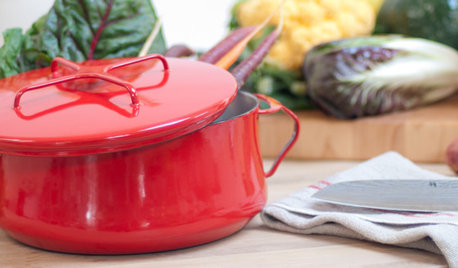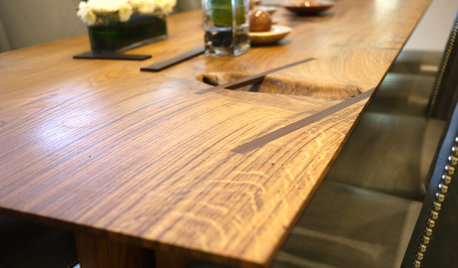root stock for Apple
trainbrainmike
11 years ago
Related Stories

SHOP HOUZZHouzz Products: Stock Your Kitchen for Autumn
Serve hearty meals with a side of style by gathering up these fall-perfect pots, linens, serving pieces and kitchen tools
Full Story
GARDENING GUIDESThe Beauty of Bare-Root Plants
Plant dormant trees and shrubs in fall using the easy, affordable bare-root method and enjoy beautiful results in spring
Full Story
HOME TECHThanks, Steve: Apple-Inspired Design at Home
See how the Mac and iPod aesthetic synchs up with today's house
Full Story
ARCHITECTURERoots of Style: Do You Live in a Minimalist Traditional House?
Cottages, bungalows, farmhouses ... whatever you call them, houses in this style share several characteristics. See how many your house has
Full Story
ARCHITECTURERoots of Style: The Eclectic American Foursquare
The turn-of-the-20th-century style transitioned U.S. residential architecture from the Victorian era to the modern age
Full Story
ARCHITECTURERoots of Style: Origins and Interpretations of the Bungalow
Bungalows translate effortlessly across continents and cultures to adapt comfortably to many styles and regions
Full Story
ARCHITECTURERoots of Style: Midcentury Styles Respond to Modern Life
See how postwar lifestyles spawned a range of styles, including minimalist traditional, ranch, split level and modern shed. What's next?
Full Story
ARTThe Beauty of Bonsai — Living Art, Rooted in Harmony
Create your own emblem of nature's balance with an art form dating back 1,000 years
Full Story
FURNITUREWood Furniture Has Root Cause
Sustainability is just the beginning with Robin Wade's lovingly made 'rustic modern' wood furnishings
Full Story
FALL AND THANKSGIVINGSimple Pleasures: A Cozy Home in Cold Weather
Stock up on these treats and essentials to make even blustery days and snowed-in time feel special
Full StoryMore Discussions






flora_uk
brandon7 TN_zone7
Related Professionals
Salem Landscape Architects & Landscape Designers · Bethlehem Landscape Contractors · Mooresville Landscape Contractors · Beachwood Landscape Contractors · Bowie Landscape Contractors · Cedar Hill Landscape Contractors · Coeur d'Alene Landscape Contractors · Franklin Landscape Contractors · Gainesville Landscape Contractors · Northbridge Landscape Contractors · Oak Forest Landscape Contractors · Rockland Landscape Contractors · Vashon Landscape Contractors · Wilton Landscape Contractors · Ansonia Landscape ContractorstrainbrainmikeOriginal Author
brandon7 TN_zone7
dave_k_gw
trainbrainmikeOriginal Author
brandon7 TN_zone7
dirt_farmer
brandon7 TN_zone7